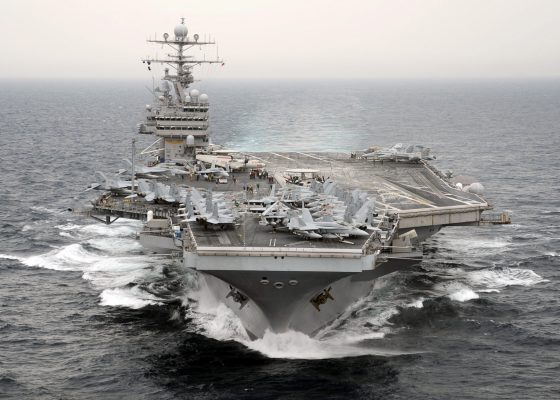
Washington: Hundreds of sailors who were evacuated from the aircraft carrier Theodore Roosevelt in recent weeks have slowly begun boarding back the warship as it takes another step towards getting back to sea.
About 4,000 sailors, or approximately 90 per cent of the ship’s crew, were quarantined in hotels in Guam, where the ship has been sidelined since March 27 after a COVID-19 outbreak on board.
A crew of approximately 700 sailors remained on board to conduct ongoing deep cleaning procedures while also manning the ship’s critical systems, a US 7th Fleet release said. Those areas of the ship that remained operational had to be disinfected before and after each shift.
Getting sailors back on board is expected to be carried out in phases over the course of the next few days, the release said. Each sailor will be tested twice for COVID-19 prior to boarding the ship.
Embarking the crew will also require extensive efforts between the 700 who remained on ship and sailors coming on board, Navy officials said.
“The stay-behind crew successfully built a ‘bubble’ around the ship, that can now be turned over to the clean crew,” Cmdr. Zach Harry, chief engineer aboard Theodore Roosevelt, said in the release.
“The crew will now create a boundary to keep the Coronavirus out. This clean bubble must now be defended. Without a clean ship and healthy sailors, we cannot execute the mission. Our sailors take pride in what they do and it shows with the effort and long hours spent cleaning our ship for our clean crew. The crew did an extraordinary job.”
Incoming sailors will take buses — which are cleaned “before, between, and after each transit” — from quarantine locations to the warship. The first waves of sailors to embark will be those who man systems critical to getting the ship back up to speed. The use of personal protective equipment will be enforced in accordance with guidelines from the Centers for Disease Control and Prevention.
The 700 crew members who remained on board, meanwhile, will finally leave the ship and begin their quarantine period.
“The bubble-to-bubble transfer and boundary is extremely important, due to our unique living and working environments on the ship,” Senior Chief Intelligence Specialist Chanda Clifton said in the release. “We have a good chance of success in protecting the crew with continued vigilance.”
“Our mission is to make sure the fighting force in the fleet is ready to go at all times,” Capt. Maria Young, commanding officer of US Naval Hospital Guam, said in the release.








